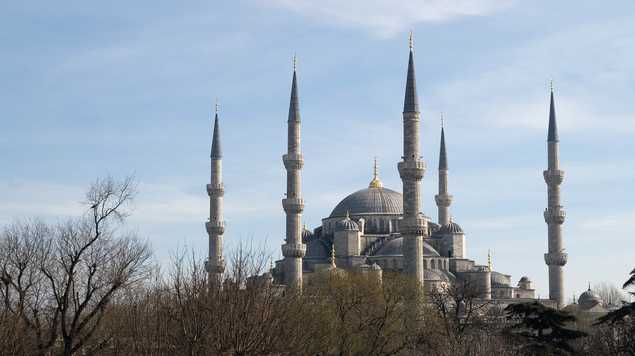
Istanbul – The Hagia Sophia
Image: Greenwich Photography
A team partly made up of British researchers, including some from the University of Edinburgh, opened an exhibition on Friday 9 November to display their work mapping the enormous network of ancient aqueducts, cisterns and channels under and around Istanbul.
The 20-year project, led by Professor James Crow of the University of Edinburgh archaeology department, began with the investigation of an ancient wall near Istanbul. It then moved on to mapping the network of aqueducts and channels that transported water to and around ancient Constantinople in the fourth century AD and for several centuries after.
Using GPS and satellite imagery above ground, the team of Turkish and British researchers mapped the enormous system of 160 cisterns under Istanbul, by far the largest of the ancient world, and the channels that delivered water to it.
Mr Riley Snyder, who is finishing a doctorate at the University of Edinburgh this year and is currently working in Ankara, was responsible for determining the nature and scale of material used. The channels, cut into hillsides and covered to protect the water, are about 1.5m across and up to 2m high and “composed of a combination of sand, crushed brick and lime… [that] created water-tight and significantly stronger structures,” Mr Snyder said.
Mr Snyder estimates that the extensive stone waterways and aqueduct bridges are 501km in length, only one kilometre short of the combined length of the 11 aqueducts that supplied ancient Rome with water.
“The total stone necessary for the construction was equivalent to the Great Pyramid of Giza, around 2.5 million cubic metres.” The scale and technological sophistication of the construction, in a period generally believed to be one of decline in construction, “shows we have much more work to do,” said Mr. Snyder.
“We sort of vaguely knew they were there,” said Professor Crow of the channels, noting that very little had been published about the system when he began work on an ancient wall in the area in 1994 while a teacher at the University of Newcastle, “they’re not in tourist books or anything.”
Professor Crow sees the potential for sustainable tourism at the sites as part of a conservation effort; “the structures are recognised but they’re not properly protected.” To this end he hopes that the exhibition, hosted by the Istanbul Research Centre for Anatolian Civilisations and housed on one of Istanbul’s busiest thoroughfares, will increase public awareness of the structures.
via University researchers take part in study of Ancient Istanbul » The Journal.

Leave a Reply